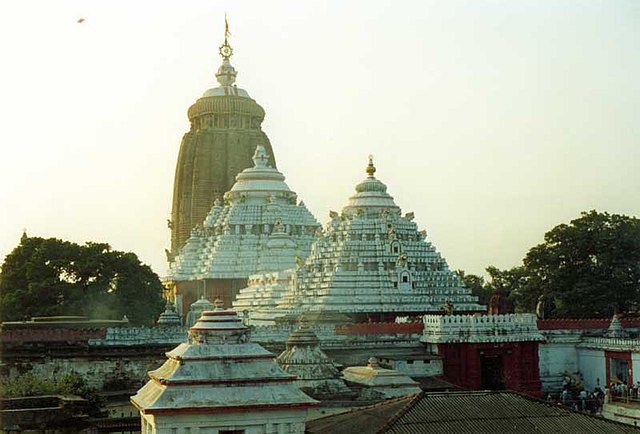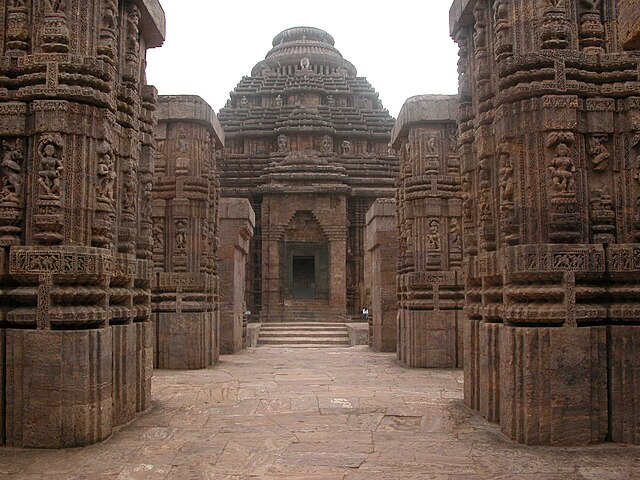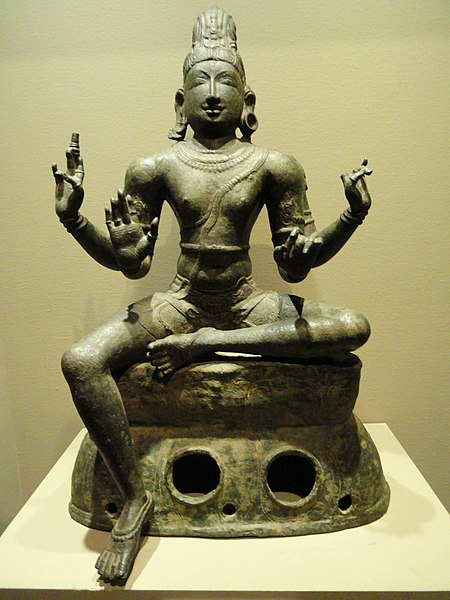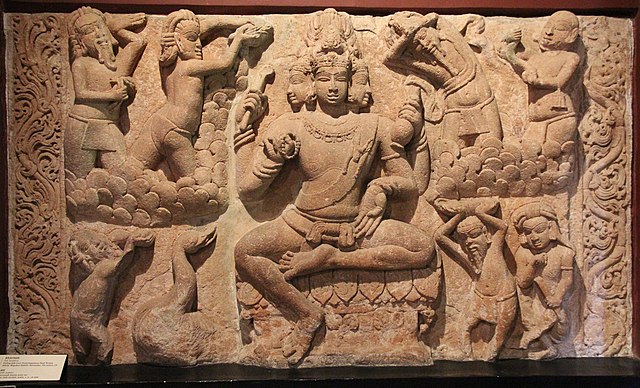The Kaḷinga architectural style is a style of Hindu architecture which flourished in the ancient Kalinga previously known as Utkal and in present eastern Indian state of Odisha. The style consists of three distinct types of temples: Rekha Deula, Pidha Deula and Khakhara Deula. The former two are associated with Vishnu, Surya and Shiva temples while the third is mainly with Chamunda and Durga temples. The Rekha Deula and Khakhara Deula houses are the sanctum sanctorum while the Pidha Deula constitutes outer dancing and offering halls.
Simplified schema of a Kalinga architecture temple
The Lingaraja Temple, a revered pilgrimage center and the culminating result of the architectural tradition at Bhubaneswar, sixth century AD.
The Jagannath Temple, one of the four holiest places (Dhamas) of Hinduism, in the coastal town of Puri in Odisha.
Konark Sun Temple, one of the most well renowned temples in India, a World Heritage Site. the tower has collapsed in the past.
Lalitasana is a pose or mudra in Indian art and the art of dharmic religions in other countries. It is often called "the royal position" or "royal ease" in English, and is a relaxed pose typical in royal portraits and those of religious figures whose "kingly" attributes are being emphasized. The figure sits on a throne with one leg tucked inwards on the seat and the other hanging down ("pendent") to touch the ground or rest on a support. Usually it is the proper right leg that dangles, but the reversed image can be found. Bare feet are normal. Asana is a general term for a seated pose, from Sanskrit: आसन āsana "sitting down", a sitting posture, a seat.
Shiva, Chola bronze, 12th-century
Chinese wooden Guanyin in "royal ease" pose, Song dynasty
Brahma, 7th-century, Aihole
King and queen in Jataka scene of an earlier life of the Buddha, c. 200, from Ghantasala








